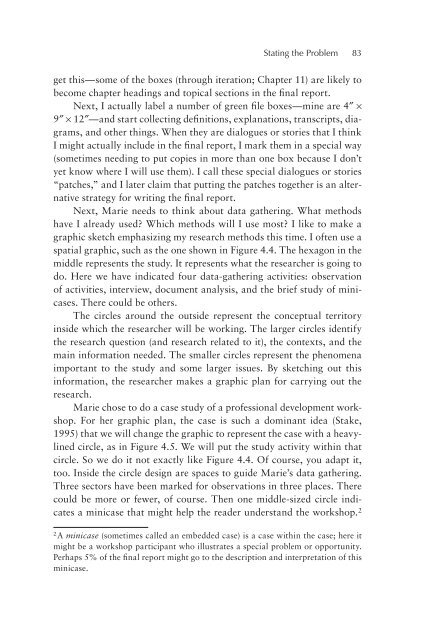How Things Work - Doha Academy of Tertiary Studies
How Things Work - Doha Academy of Tertiary Studies
How Things Work - Doha Academy of Tertiary Studies
Create successful ePaper yourself
Turn your PDF publications into a flip-book with our unique Google optimized e-Paper software.
Stating the Problem 83<br />
get this—some <strong>of</strong> the boxes (through iteration; Chapter 11) are likely to<br />
become chapter headings and topical sections in the final report.<br />
Next, I actually label a number <strong>of</strong> green file boxes—mine are 4″ ×<br />
9″ × 12″—and start collecting definitions, explanations, transcripts, diagrams,<br />
and other things. When they are dialogues or stories that I think<br />
I might actually include in the final report, I mark them in a special way<br />
(sometimes needing to put copies in more than one box because I don’t<br />
yet know where I will use them). I call these special dialogues or stories<br />
“patches,” and I later claim that putting the patches together is an alternative<br />
strategy for writing the final report.<br />
Next, Marie needs to think about data gathering. What methods<br />
have I already used? Which methods will I use most? I like to make a<br />
graphic sketch emphasizing my research methods this time. I <strong>of</strong>ten use a<br />
spatial graphic, such as the one shown in Figure 4.4. The hexagon in the<br />
middle represents the study. It represents what the researcher is going to<br />
do. Here we have indicated four data- gathering activities: observation<br />
<strong>of</strong> activities, interview, document analysis, and the brief study <strong>of</strong> minicases.<br />
There could be others.<br />
The circles around the outside represent the conceptual territory<br />
inside which the researcher will be working. The larger circles identify<br />
the research question (and research related to it), the contexts, and the<br />
main information needed. The smaller circles represent the phenomena<br />
important to the study and some larger issues. By sketching out this<br />
information, the researcher makes a graphic plan for carrying out the<br />
research.<br />
Marie chose to do a case study <strong>of</strong> a pr<strong>of</strong>essional development workshop.<br />
For her graphic plan, the case is such a dominant idea (Stake,<br />
1995) that we will change the graphic to represent the case with a heavylined<br />
circle, as in Figure 4.5. We will put the study activity within that<br />
circle. So we do it not exactly like Figure 4.4. Of course, you adapt it,<br />
too. Inside the circle design are spaces to guide Marie’s data gathering.<br />
Three sectors have been marked for observations in three places. There<br />
could be more or fewer, <strong>of</strong> course. Then one middle-sized circle indicates<br />
a minicase that might help the reader understand the workshop. 2<br />
2 A minicase (sometimes called an embedded case) is a case within the case; here it<br />
might be a workshop participant who illustrates a special problem or opportunity.<br />
Perhaps 5% <strong>of</strong> the final report might go to the description and interpretation <strong>of</strong> this<br />
minicase.

















